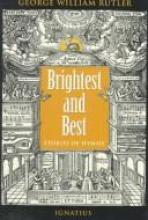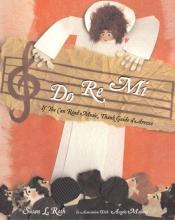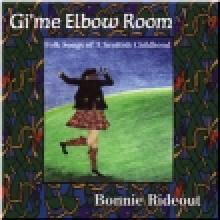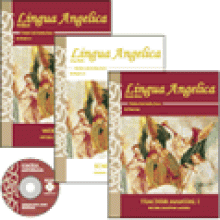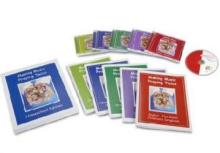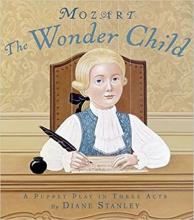Music
Baby Mozart
More annoying than the CD, however, is the video. The video takes the same watered-down music and combines it with images of moving toys that make their way across the screen. (This goes on for about half an hour, I believe. I haven't been able to sit through the whole thing.) The end of the video provides information on where to buy the toys. The toys aren't particularly beautiful or educational - just rolling toy animals, jack in the boxes, etc. I can't deny that my younger children enjoyed watching the video, but children like a lot of things that aren't necessarily all that great for them. I'd much rather have my children playing with pots and pans in the kitchen than be mesmerized by videos of toys and Mozartish music. I also object to the idea that this company charges money for what seems to be little more than a fancy toy catalog.
Additional information (added September 2007): TIME Magazine article on studies involving "educational" videos for babies
Disney demands retraction of Baby Einstein study
Are "Educational" Baby Videos a Scam?
Beck Family Musical Series
Brightest and Best
This book consists of a fine selection of favorite hymns, including musical notation, and rather detailed stories about the authors of the text, the composers of the music, giving the student a good idea of how and when the music came about.
The author's purpose in writing the book "was to restore attention to some of the finest hymns, in the hope that they might replace the miserable afflictions that keep cropping up in ... 'missalettes'... It seemed to me that hymns might be better appreciated if we knew a little more about the stories behind them: first of all, who wrote them and in what circumstances." (From the Introduction).
Approximately 100 hymns are included. I'd like to note that the text of the hymns is often not the text that Americans today are most familiar with. There's a good reason for this. Over the years, the text of many hymns has been "simplified" which has often detracted from its meaning and significance. Fr. Rutler would like us to appreciate the songs as they were originally written.
What a wonderful Catholic resource for real music appreciation in the homeschool. What we give our children today in this realm may have a significant impact on turning back to more beautiful and reverent music in the future. Please note that there are some hymns that were not written by Catholics. Fr. Rutler explains in the introduction: "If the following selection of hymns joins to these great orthodox souls a Lutheran such as the war-ravaged Melchior Teschner ... this is testimony to the wonders God accomplishes through those who seek his goodness...some of these in their day wrote of doctrine more sturdily than [many of today's composers]."
Do Re Mi
A dear blog reader recommended this picture book on the life of Guido d'Arezzo, the Benedictine monk who came up with the system for writing music one thousand years ago–the same system we still use today. I requested it via inter library loan since our library does not own the title.
I liked the way the life of the monks is described, but I wonder about the illustrations... in the book the monks look more like Dominicans in white habit... Honestly, my wish is for the book to be re-ilustrated by another artist! Still, a very nice cultural picture book and... you may not mind the style of the illustrations!
Gi'Me Elbow Room, Folk Songs of A Scottish Childhood
Three time national fiddle champion Bonnie Rideout put together an enchanting collection of songs and poems for children on this mp3 album, originally released on CD. She has set traditional poems and nursery rhymes (such as "Bobbie Shafto" and "Wee Willie Winkie") to traditional Scottish tunes and includes familiar songs such as "My Bonnie Lies Over the Ocean" and "Oh Dear, What Can the Matter Be."
The best part of the album are the pieces of original and traditional music set to the poems of Robert Louis Stevenson and an absolutely ingenious adaption of the Yeats poem, "The Fiddler from Dooney."
I cannot praise this album enough, it is extremely well done. As part of our homeschooling we memorize poetry so my children were in awe of a Robert Louis Stevenson "song." The music is irresistible and we are all singing the songs throughout the day. The instruments used in creating the music on various pieces include the following: fiddle, viola, harp, recorder, bodhran, piano, guitar, tin whistle, ocarina, dulcimer, and if you can believe it, coffee can, tinkertoy can and kazoo.
If you and your children like traditional Irish and Scottish music, this mp3 (or CD) album would be a great addition to your collection. It can be ordered from any music store or directly from the music company.
Lingua Angelica
There are several components of this Latin/Music Appreciation Program. Materials may be purchased individually or in sets, depending on where you purchase them from.
Song Book and Audio CD: A lovely, six voice polyphonic choir performs twenty-four Latin songs and hymns a capella (without accompaniment) on this professionally-recorded CD. Not only is this a beautiful way to present this type of music, but it also makes the music easier to learn for children and families. These songs represent some of the most beautiful musical treasures of the Church - from Gregorian Chant ( e.g. Mass of the Angels and Adoro Te ) to classic four-part hymns (e.g. Panis Angelicus and Stabat Mater). Singing can be a great component of your Latin curriculum. It aids pronunciation, provides additional (and fun) practice and helps students make connections to Latin used outside of class.
The CD alone is a wonderful complement to a Catholic education and a simple way to introduce your children to the beauty of our Catholic heritage. I found my two year old singing snatches of the Ave Maria when we had only listened to the CD a few times. The song book includes four part harmonies and extensive verses all written in modern musical notation (if you'd like the Gregorian Chant notation for the appropriate songs, you will find those in the Adoremus Hymnal). In addition to the more "serious" selections, this set also includes some fun-to-sing songs like the traditional German Student Song Gaudeamus Igitur.
Even on their own, the Lingua Angelica CD and Song Book will make an excellent addition your Latin curriculum, a beautiful component of family devotions and an excellent resource for music history and appreciation. The song book also includes historical notes on the songs and offers some related topics for further research. Every Catholic family - even those not yet studying Latin formally - will enjoy and benefit from this musical set.
Student Book and Teacher Manual (Level I): The first level Lingua Angelica text gently guides student and teacher through sixteen Latin prayers and songs through the study of vocabulary and grammar. While this is not intended as a complete Latin program in and of itself, it will reinforce grammar components learned elsewhere and help interconnect Latin studies with related subjects. Ideally, this supplement would be started once the student has completed about three quarters of Latina Christiana I. Each lesson covers a song or a part of a song; offering new vocabulary and practicing noun, verb and adjective endings. The back of the text includes thirteen pages of Grammar Charts for easy reference.
The Introduction to the Teacher's Manual gives a great overview of the reasons why Christian Latin can be so helpful and formational on many levels - both as a foundation of "real" Latin for students to build their later studies upon and as a beautiful and worthy subject matter for our children to memorize and learn to appreciate for their own sake. This manual also includes a detailed schedule (with varying levels of learning activities which are easily adaptable for different abilities) and grammar and vocabulary notes on each song.
The entire Lingua Angelica - the Song Book, audio CD and two levels of Texts (with teacher's manuals) provides a well-planned six-year Latin supplement based on these songs and prayers. These six years are specifically intended to complement the two years of Latina Christiana and four years of Henle.
Making Music Praying Twice
Mozart, the Wonder Child
No need to introduce young Mozart or kids biographer extraordinaire Diane Stanley, but this brand new biography has a twist: she wrote the whole book as a marionette play! The pictures look as if his whole life is a show, with characters suspended on strings. Expect the usual detail-rich, high level writing that comes with her wonderful biographies.
Another innovative aspect is the medium she chose for the paintings for this book: the 500-year old method of egg-tempera. On the interior of the back jacket she explains about this medium and directs readers to the Society of Tempera Painters at www.eggtempera.com. For this art teacher, this definitely sparks my curiosity... potential projects abound in my head!

